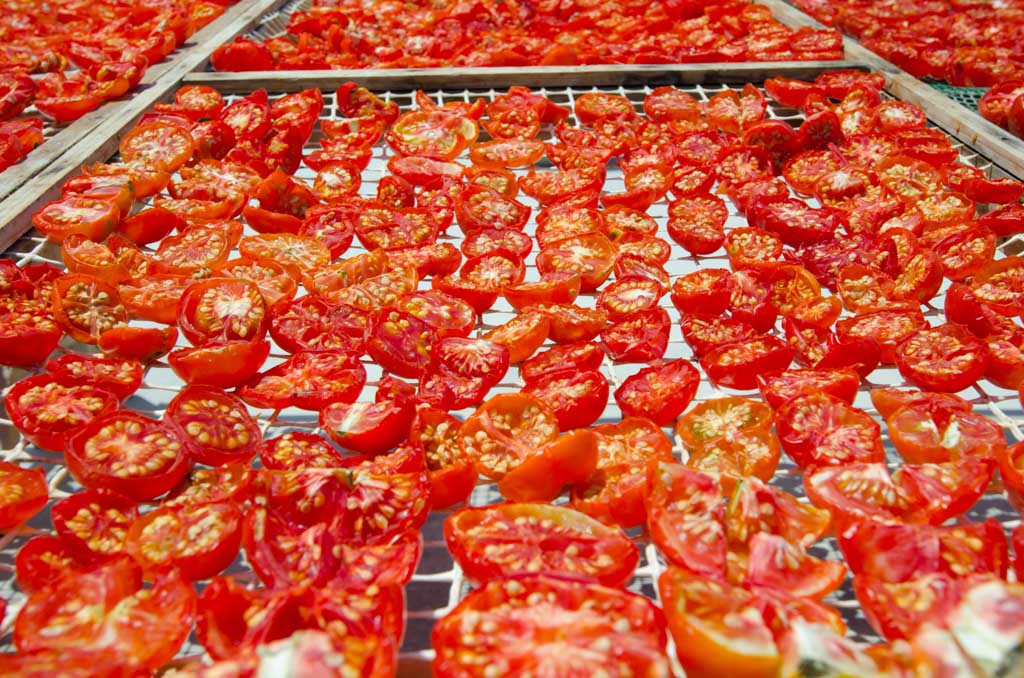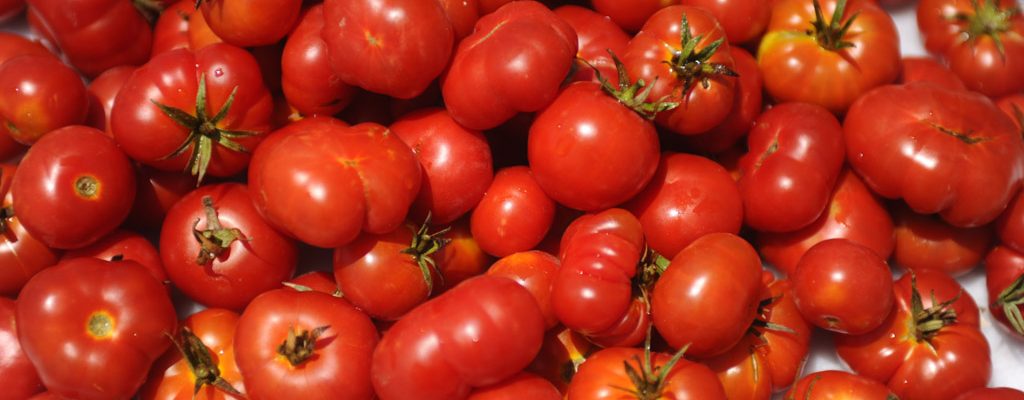When people daydream about Greece, the humble tomato ranks surprisingly high, right up there with the beaches and the sunshine. This is because we associate Greece with elemental, classic and simple pleasures. And the Greek tomato is certainly one of these. Achingly sweet, bursting with flavor, and rich in color, it is impossible to imagine the Greek summer without it.
A (Surprisingly) Brief History of the Greek Tomato
The tomato, an essential of the Greek table as we know it today, came to Greece quite late. We all know that the tomato is a gift from the New World, and did not hit European soil until the Spanish explorers brought it back in the 16th century. But its introduction to Greece was actually later than that- hundreds of years later, in fact. The monks at the French Capuchin monastery in Plaka were excellent gardeners and were known for their flower garden. Father Paul d’Ivray introduced some tomato seeds into the garden in the early part of the 19th century, about 1815. From here, the tomato moved to the garden of a French family in an Athenian suburb. Or was it the other way around? No one is sure today. But at any rate it seems the tomato was seen as ornamental only.

Athens as we know was then still under Ottoman rule, but freedom would soon come. With it, the cuisine began to develop. It began to appear in cookbooks, fried and stuffed, and then turned into a sauce. It was still called the ‘golden apple’ – a translation of the Italian name by which it is still known in Italy today – the pomodoro.
Varieties of Greek Tomatoes
The Greek Tomato is available all year round thanks to the fertile soil and gentle climate – cultivated in the greenhouses of Ierapetra on Crete and in other places. But the flavorful tomatoes we daydream about are the open air tomatoes. These make their first appearance around Easter time. The best varieties have short seasons, with the varieties overlapping so we are never without one favorite or another.
Santorini – a Tomato Hotspot

The Cycladic Islands are dry, and whatever grows in their soil is strong and packed with flavor. The Santorini “Domataki” (little tomato) stands out- flattish, lumpy, and rather small, they are packed with flavor, nourished in the volcanic soil. They star in several Santorini dishes, and are also canned on the island. Santorini tomato paste is considered to be of the highest quality.
Kimolos Tomatoes
A similarly flavorful and small tomato grows in the chalky soil of Kimolos. In Kimolos, the tomatoes are pureed and then the pure, salted with sea salt, is placed on the roofs of houses to dry in the sun and the Cycladic winds. Every day they stir it to even the texture. The result is ‘Beltes’ and it tastes like the sun itself.
Cretan Tomatoes
Several varieties of heirloom tomatoes grow in the fertile soils of Crete, both ‘native’ varieties and other more commercial varieties introduced. There is a pink beefsteak tomato that is especially flavorful and sweet.
Lesvos Tomatoes
Lesvos specializes in a very small cherry tomato that was introduced from Thrace and now thrives on the island.
What to do with Greek Summer Tomatoes
The tomato is now the undisputed cornerstone of Greek summer cooking. Here are some of our favorite dishes where it plays a starring role:
The Greek Salad
Called “Horiatiki” – ‘village salad’ in Greek – this combination of tomato slices, cucumbers, some onion, black olives, a slab of feta, and some crumbled oregano, all topped with golden extra-virgin olive oil – is a meal in itself or a lavish side dish beside fish or grilled meat – a daily essential.
 “Dakos” – Cretan Rusks with Tomato and Cheese
“Dakos” – Cretan Rusks with Tomato and Cheese
Perhaps even more substantial than the Greek salad, this Cretan summer standby stars a flavorful rusk- usually of barley but they are also made of rye or other grains. These dried rusks are quite hard, which suits them ideally to this dish. First, we grate tomatoes whole on the large holes of a cheese grater – an excellent method for making a skinless fresh tomato puree as the skin stays whole.
 We season the puree with salt and oregano and add some olive oil, and put it generously over each rusk individually and let it soak in and soften the rusk. Then we top each with a generous dab of fluffy white ‘mizithra’- the soft fresh and tangy goat cheese of the island – and garnished with a few olives. This thick and hearty Cretan take on a bruschetta is wholesome and filling and yet very light.
We season the puree with salt and oregano and add some olive oil, and put it generously over each rusk individually and let it soak in and soften the rusk. Then we top each with a generous dab of fluffy white ‘mizithra’- the soft fresh and tangy goat cheese of the island – and garnished with a few olives. This thick and hearty Cretan take on a bruschetta is wholesome and filling and yet very light.
Tomatokeftedes of Santorini

Santorini’s delicious small tomatoes star in their own satisfying hot fritter. Grated tomatoes are seasoned with onion, mint, oregano, and dill, enriched with crumbled feta, and bound together with enough flour to make a thick batter. A pinch of baking soda lightens the mixture, and then spoonfuls of it are deep fried into golden puffy croquettes – absolutely delicious.
Tomato “Glyko Koutaliou”
Tomatoes for dessert? It works very well actually; the ‘spoon sweet’ is a Greek tradition in which usually fruits, but also sometimes nuts, flower petals, and even tomatoes are transformed into a beautiful sweet with sugar. The tiny tomatoes are seasoned with cinnamon or clove or the choice of the cook, and simmered whole with sugar until they glisten. They are delicious with strained yogurt or just on their own with a glass of cold water on the side – the traditional way.
The Greek Tomato
 Have you ever had Greek summer tomatoes at their peak? What was your favorite way to enjoy them?
Have you ever had Greek summer tomatoes at their peak? What was your favorite way to enjoy them?





